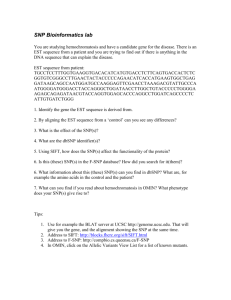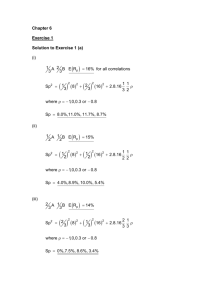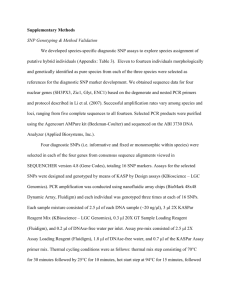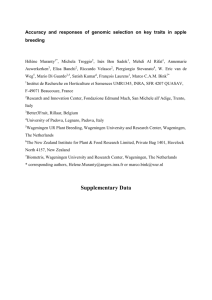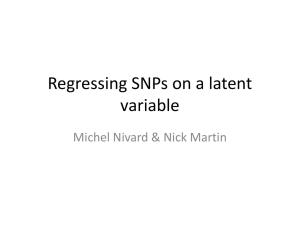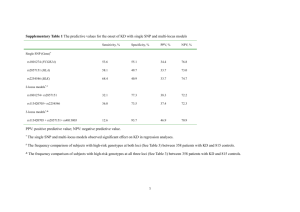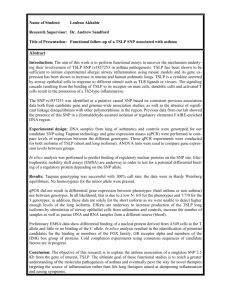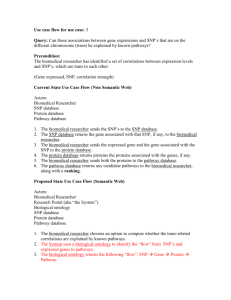Supplemental File S2. SNPs-Student Example
advertisement
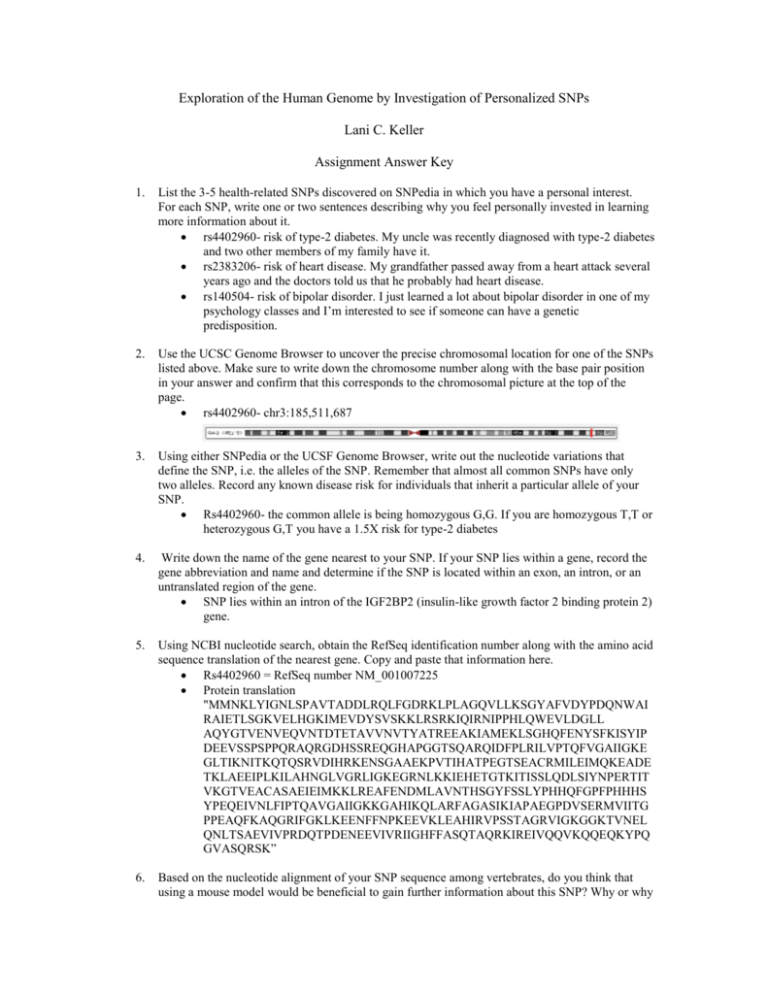
Exploration of the Human Genome by Investigation of Personalized SNPs Lani C. Keller Assignment Answer Key 1. List the 3-5 health-related SNPs discovered on SNPedia in which you have a personal interest. For each SNP, write one or two sentences describing why you feel personally invested in learning more information about it. rs4402960- risk of type-2 diabetes. My uncle was recently diagnosed with type-2 diabetes and two other members of my family have it. rs2383206- risk of heart disease. My grandfather passed away from a heart attack several years ago and the doctors told us that he probably had heart disease. rs140504- risk of bipolar disorder. I just learned a lot about bipolar disorder in one of my psychology classes and I’m interested to see if someone can have a genetic predisposition. 2. Use the UCSC Genome Browser to uncover the precise chromosomal location for one of the SNPs listed above. Make sure to write down the chromosome number along with the base pair position in your answer and confirm that this corresponds to the chromosomal picture at the top of the page. rs4402960- chr3:185,511,687 3. Using either SNPedia or the UCSF Genome Browser, write out the nucleotide variations that define the SNP, i.e. the alleles of the SNP. Remember that almost all common SNPs have only two alleles. Record any known disease risk for individuals that inherit a particular allele of your SNP. Rs4402960- the common allele is being homozygous G,G. If you are homozygous T,T or heterozygous G,T you have a 1.5X risk for type-2 diabetes 4. Write down the name of the gene nearest to your SNP. If your SNP lies within a gene, record the gene abbreviation and name and determine if the SNP is located within an exon, an intron, or an untranslated region of the gene. SNP lies within an intron of the IGF2BP2 (insulin-like growth factor 2 binding protein 2) gene. 5. Using NCBI nucleotide search, obtain the RefSeq identification number along with the amino acid sequence translation of the nearest gene. Copy and paste that information here. Rs4402960 = RefSeq number NM_001007225 Protein translation "MMNKLYIGNLSPAVTADDLRQLFGDRKLPLAGQVLLKSGYAFVDYPDQNWAI RAIETLSGKVELHGKIMEVDYSVSKKLRSRKIQIRNIPPHLQWEVLDGLL AQYGTVENVEQVNTDTETAVVNVTYATREEAKIAMEKLSGHQFENYSFKISYIP DEEVSSPSPPQRAQRGDHSSREQGHAPGGTSQARQIDFPLRILVPTQFVGAIIGKE GLTIKNITKQTQSRVDIHRKENSGAAEKPVTIHATPEGTSEACRMILEIMQKEADE TKLAEEIPLKILAHNGLVGRLIGKEGRNLKKIEHETGTKITISSLQDLSIYNPERTIT VKGTVEACASAEIEIMKKLREAFENDMLAVNTHSGYFSSLYPHHQFGPFPHHHS YPEQEIVNLFIPTQAVGAIIGKKGAHIKQLARFAGASIKIAPAEGPDVSERMVIITG PPEAQFKAQGRIFGKLKEENFFNPKEEVKLEAHIRVPSSTAGRVIGKGGKTVNEL QNLTSAEVIVPRDQTPDENEEVIVRIIGHFFASQTAQRKIREIVQQVKQQEQKYPQ GVASQRSK” 6. Based on the nucleotide alignment of your SNP sequence among vertebrates, do you think that using a mouse model would be beneficial to gain further information about this SNP? Why or why not? (A mouse model would typically be a pair of mice strains that carry different alleles of your SNP.) No, using a mouse model to further study rs4402960 would be a bad idea because this region is not conserved between mice and humans! 7. Using proper Council of Science Editors style referencing, list three published genome-wide association studies that have identified your SNP. Perry JR, Voight BF, Amin N. 2012 Stratifying type 2 diabetes cases by BMI identifies genetic risk variants in LAMA1 and enrichment for risk variant in lean compared to obese cases. PLoS Genet 8(5):e1002741. Takeuchi F, Serizawa M, Yamamoto K. 2009. Confirmation of multiple risk Loci and genetic impacts by a genome-wide associate study of type 2 diabetes in the Japanese population. Diabetes 58(7):1690-9. Majajan A, Go MJ, Zhang W. 2014. Genome-wide trans-ancestry meta-analysis provides insight into the genetic architecture of type 2 diabetes susceptibility. Nat Genet 46(3):234-44. 8. Make screen shots of your SNP’s genomic region including the SNP, the multiple alignments, and the genome-wide association studies.

